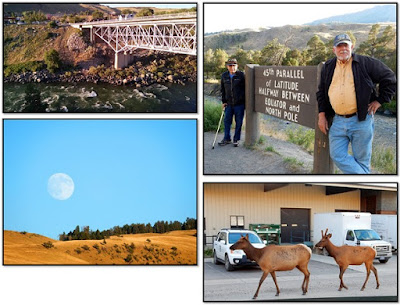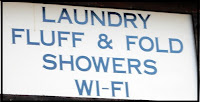 |
| Pittosporum |
Created for young-at-heart adventurers, this blog provides information about both domestic and international travel.
Friday, October 30, 2015
The Other Arlington, the One in Texas
Labels:
Arlington TX,
restaurants,
reviews
Location:
Arlington, TX, USA
Friday, October 23, 2015
Back to the Smokeys
 |
| Grove Park Inn Grounds |
Labels:
Asheville,
Black Mountain,
glass,
restaurants,
reviews
Location:
Black Mountain, NC, USA
Friday, October 16, 2015
Feed, Seed and Beer to Go
 |
| Thurber Smokestack |
For years Dave has been visiting Thurber and Mingus to
celebrate the beginning of the deer hunting season. What he enjoyed, more than
the hunting, was the food that was available. Mingus, with its small downtown
not only has a post office, but a convenience store called the Feed, Seed and
Beer to Go. The area is full of West Texas whimsy. Thurber is now a tiny unincorporated
community in Erath County about 75 miles west of Fort Worth. However, between
1888 and 1921 it was one of the largest producers of bituminous coal in Texas
and the largest company town in the state. Thurber’s coal-mining operations
began in 1886 and peaked in the 1920s. The mining attracted workers from Italy,
Poland and Mexico to this company town that was owned by the Texas and Pacific
Coal Company (through their subsidiary the Texas Pacific Mercantile and
Manufacturing Company). This company served the Texas and Pacific Railway to
whom it provided fuel until 1920 when the locomotives converted from coal to
oil. The other industry booming in Thurber at this time was the production of vitrified
paving bricks; these bricks are still in use in Texas and in the southern half
of the US. Next door to Thurber is Mingus. Even though it’s smaller than Thurber, it has a
post office. Named for William Mingus, it was the location of the 1881
construction of the Texas and Pacific Railway. The community served local
farmers and ranchers, as well as a place for truckers and hunters to stop for
supplies and/or refreshments.
Labels:
Mingus,
restaurants,
reviews,
Thurber
Location:
Thurber, TX 76463, USA
Friday, October 9, 2015
Reviews of the Road Trip to Yellowstone
 |
| Bears at Elk Antlers Inn |
Friday, October 2, 2015
Towns along the Road
 |
| Top L to R: Bridge at Gardiner, 45th Parallel Bottom L to R: Moon at Gardiner, Elk |
 |
| Laundry Sign |
 |
| Original North Entrance to Yellowstone National Park |
Labels:
Bozeman,
Buffalo Bill,
Cody,
Cooke City,
Gardiner,
museums,
Thermopolis
Location:
Thermopolis, WY 82443, USA
Subscribe to:
Posts (Atom)